When it comes to keeping valuables secure, a good lock isn’t always enough. A clever hiding spot can give you that extra layer of protection and peace of mind. The best places to hide a safe aren’t always the most obvious. In fact, the smartest hiding spots blend into your home so well, even you might forget where you put it. Here are 16 smart, creative, and practical ideas for concealing a safe right inside your home.
1. Inside a Wall Behind a Fake Air Vent
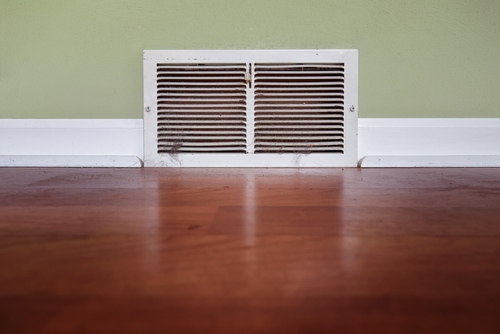
This method is a favorite among security pros for a reason. Fake air vents look completely natural in most homes, especially in hallways or utility rooms. By installing a small wall safe behind one, you create a secret stash that’s practically invisible. These safes sit flush with the wall and can be easily covered with a magnetic or screw-on vent cover. Make sure to install it in a spot where a vent wouldn’t seem out of place—random vents in bedrooms or closets might raise suspicion. For added camouflage, surround it with actual functioning vents so it blends right in.
2. Beneath Floorboards in a Low-Traffic Room
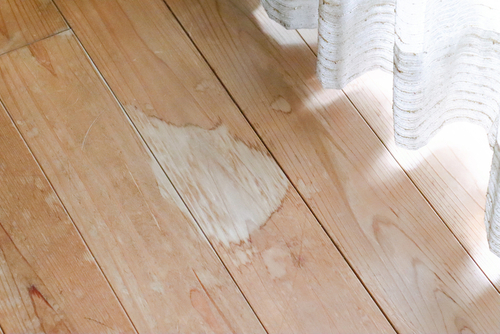
Floor safes have long been a favorite of those looking to protect high-value items. The trick here is location. Pick a room that doesn’t get much foot traffic, such as a guest bedroom, hallway closet, or home office. Remove a few floorboards, install a recessed safe, and then replace the boards on top so they sit flush. For extra stealth, place a rug, piece of furniture, or even a stack of boxes over it. Just make sure you have a secure way to lift the boards when you need access. It’s a classic, tried-and-true method that works best with hardwood floors or older homes.
3. Inside a False Electrical Outlet
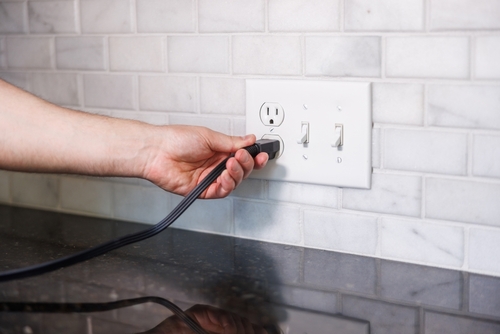
Most burglars aren’t going to start unscrewing your outlets to look for valuables. That’s what makes this hiding place so smart. You can buy fake electrical outlets designed to serve as small secret compartments. These are best used for storing compact items like jewelry, emergency cash, or USB drives. They’re easy to install and look completely authentic. To avoid suspicion, place the outlet on a wall that already has several visible outlets or switches. Don’t overdo it—an outlet every few feet might give the game away. Used wisely, this spot is one of the most underrated ways to hide valuables in plain sight.
4. Under the Sink Cabinet’s Kick Plate
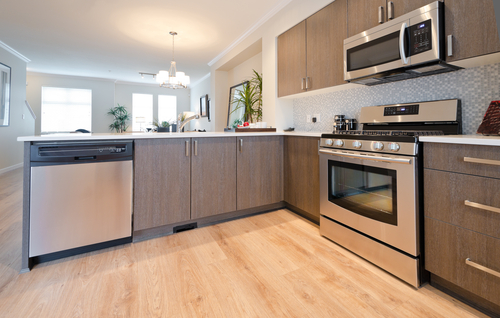
That small recessed space at the bottom of your kitchen or bathroom cabinets is usually wasted—but it doesn’t have to be. The kick plate, or toe-kick, can be removed and turned into a hidden drawer or compartment. You can either build a slide-out mechanism or simply attach a magnetically sealed cover. This spot is great for flat safes or storage boxes and works especially well if your cabinetry is dated or cluttered. Burglars almost never look in this space, especially since it usually requires kneeling or unscrewing parts. It’s a fantastic low-effort, high-reward option for anyone who wants a quick-access secret spot.
5. Behind a Bookshelf With a Hidden Compartment
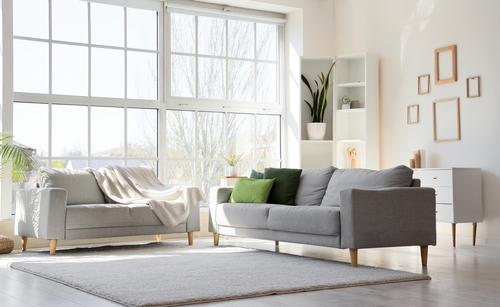
Bookshelves are one of the most versatile pieces of furniture when it comes to hidden storage. You can either modify an existing bookshelf with a false back or invest in a ready-made model with hidden panels. Some even swing open like a secret door in a mystery movie. A wall safe hidden behind a sturdy bookshelf can be nearly impossible to detect, especially when it’s loaded with books and trinkets. Bonus points if you choose a deep shelf that’s bolted to the wall—this adds an extra layer of security and makes it hard to move. For creative DIYers, this might be the most fun and satisfying option on the list.
6. Inside a Hollowed-Out Couch Armrest
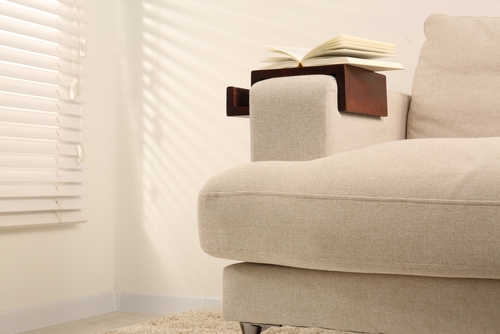
Furniture safes are growing in popularity, and for good reason—they combine comfort with covert protection. Some modern couches and recliners come pre-equipped with storage in the armrests, but you can also customize your own. By hollowing out the inside of a thick, upholstered armrest, you can install a small safe or box. This type of hiding spot is perfect for items you might want quick access to, like cash, keys, or even a firearm. It’s comfortable, convenient, and camouflaged by design. Just make sure the compartment doesn’t affect how the couch feels when you’re lounging.
7. Inside a Fake HVAC Return Grille
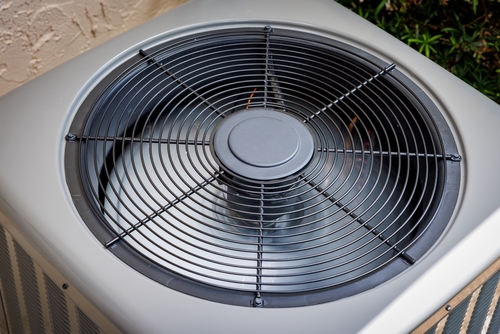
HVAC returns are larger than typical vents and are often ignored during quick burglaries. A fake HVAC return grille can cover up a wall safe that might otherwise be too big for smaller concealment options. These grilles are easy to buy online and come in all shapes and sizes, allowing you to match them to your home’s decor. If you’re installing a larger safe, this is a sleek option that won’t interfere with room aesthetics. Make sure the fake return has no visible flaws—any oddities in texture or alignment could make it a red flag instead of a hiding spot.
8. Under a False Bottom Drawer
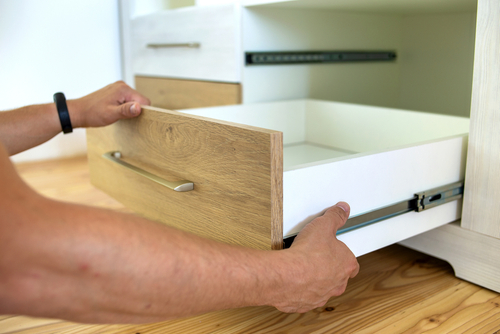
Many drawers, especially in older or handmade furniture, have room for modification. By raising the bottom with an inserted panel, you can create a concealed space underneath the visible drawer area. This is especially effective in nightstands, dressers, and office desks. Use the drawer as normal to further mask the safe’s existence—keep socks, pens, or old papers up top. Beneath, you can store cash, jewelry, or other small valuables. The key is making sure the false bottom fits snugly and doesn’t rattle or shift when the drawer is opened.
9. Inside the Attic Under Insulation
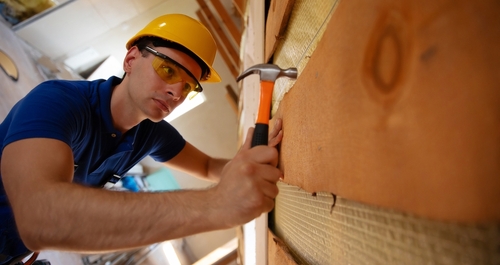
While attics aren’t climate-controlled or comfortable, they’re excellent for hiding safes. Criminals rarely climb into hot, dark, dusty crawlspaces. You can install a small fireproof safe under insulation or behind a support beam. If your attic has a storage nook or floorboards, even better—cut into a corner or lay the safe flat and cover it with clutter. Use weatherproof materials and be mindful of moisture or rodent issues. This isn’t the best location for daily-use items, but for things you rarely need, it’s practically invisible.
10. In a Basement Wall Behind Storage Shelves

Basements are cluttered, cold, and often filled with junk—making them perfect for hiding something important. Wall-mounted storage shelves can hide a recessed safe behind boxes of tools, books, or holiday decorations. Cut into drywall or install the safe inside a cinder block wall, then position heavy items or bins in front to cover any seams. For an extra layer of camouflage, make the shelving unit seem messy or unorganized. Thieves are looking for quick wins—not a full excavation project in your basement storage zone.
Read More: 23 DIY Home Improvements You Should Never Hire Out
11. Behind a Full-Length Mirror With Hinges

Mirrors are sleek and decorative—but also perfect for disguise. A full-length mirror mounted with concealed hinges can swing open like a door, revealing a hidden safe behind it. This setup works best in bedrooms, closets, or bathrooms where mirrors are expected. You can DIY the project using a recessed wall safe and standard hinges or purchase a ready-made concealment mirror. Add a magnetic lock or latch to keep it secure. Just make sure the mirror sits flush against the wall so the secret stays safe. If done well, even close friends won’t suspect a thing.
12. Inside the Pantry Behind Canned Goods
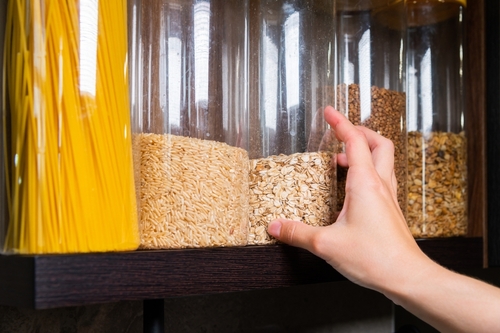
Your pantry is likely one of the last places a thief will check—especially if it looks boring. That’s exactly why it’s such a clever hiding spot. Build a false back panel behind your shelves, or hollow out a few inches between the shelves and wall. Then install a small safe or lockbox behind rows of canned food or cereal. You can even use fake labels or rig decoy containers that double as secret compartments. Make sure the safe is well-supported and easily reachable, so you can grab what you need without toppling the entire shelf.
13. Behind Wall Art or a Picture Frame
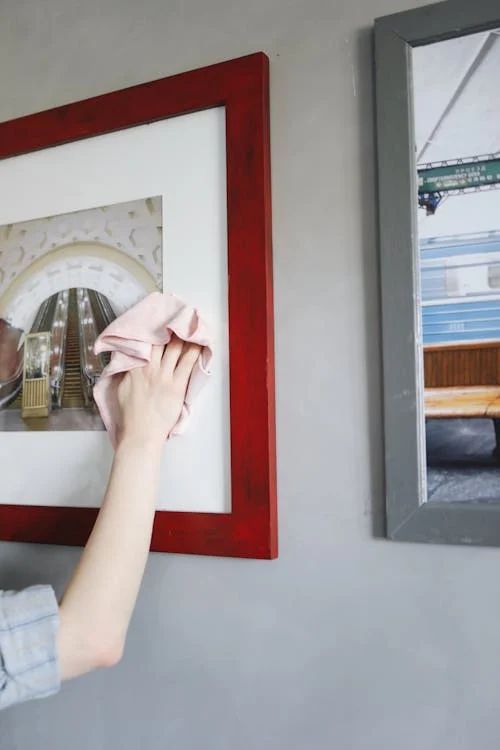
Art has long been used to conceal valuables, and it’s still one of the most effective methods. A large framed photo, painting, or decorative panel can swing open or lift off to reveal a hidden safe. Some wall safes are designed specifically to be hidden behind art and come with magnetic or latch-based doors. Pick a piece that doesn’t attract too much attention and hang it at eye level to discourage inspection. This setup works well in home offices, hallways, and bedrooms. Bonus: You can rotate the artwork occasionally to keep things extra unpredictable.
14. Inside a Hollowed-Out Old Appliance
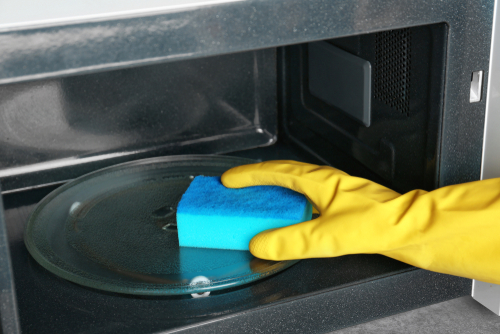
Old electronics make great camouflage. Think of that broken microwave in the garage or the dusty printer in the corner of your office—most people wouldn’t even give them a second glance. You can gut these appliances, line the inside with insulation or padding, and tuck a compact safe inside. Be sure to label it with something uninviting like “spare parts” or “dead unit.” It’s an especially good trick for garages, sheds, or laundry rooms where things naturally look messy or out-of-use. As long as the appliance isn’t plugged in or making noise, it’s hiding in plain sight.
15. Inside a Stair Tread or Step Drawer
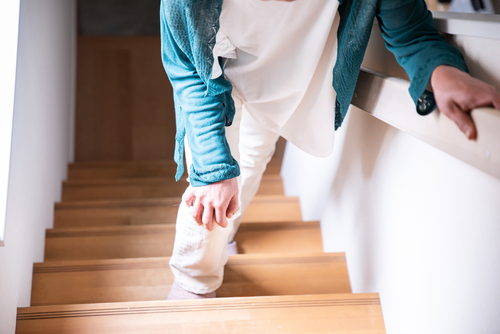
If you have a staircase with wooden steps, you’ve got a brilliant opportunity for secret storage. By modifying one or more stair treads to act as drawers or lift-up lids, you can create deep, hidden compartments that can easily house a safe. It’s subtle, secure, and totally unexpected. This works especially well in homes with custom woodwork or older staircases where a bit of creaking won’t raise eyebrows. Just make sure the step remains structurally sound and doesn’t feel loose underfoot. Add a soft-close mechanism to prevent slamming or noise.
16. Inside a Closet Behind Hanging Clothes
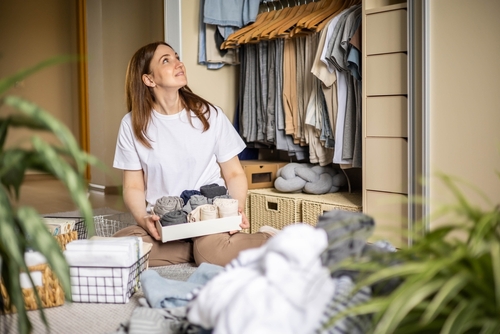
Sometimes, the simplest option is the best. A safe tucked into the back wall of a closet, hidden behind a full row of jackets or dresses, is remarkably effective. Burglars typically go for drawers and boxes before pushing through clothing. You can build a recessed safe directly into the wall or place a freestanding safe behind a tall pile of hanging clothes. Use dark or oversized items to conceal it completely. For extra stealth, hang a secondary curtain or install a sliding wardrobe door to isolate the area even more.
Final Thoughts on Hidden Safes
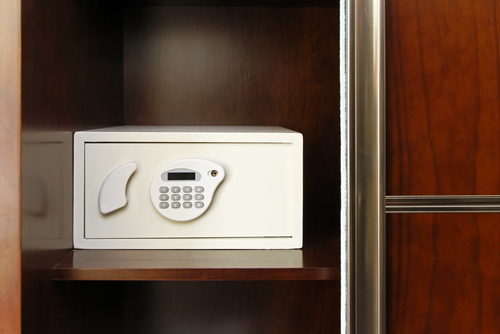
Choosing the right safe is only half the battle—where you put it can make or break your security plan. Thieves often look in the obvious places first, like under beds, inside closets, and behind wall art. That’s why creative concealment is so important. With these 16 smart hiding spots, you can keep your valuables out of sight, out of mind, and far from harm. Whether you’re securing jewelry, cash, documents, or digital backups, these ideas give you a strong head start in protecting what matters most.
Read More: 5+ Must Have Home Design for Spring 2025

